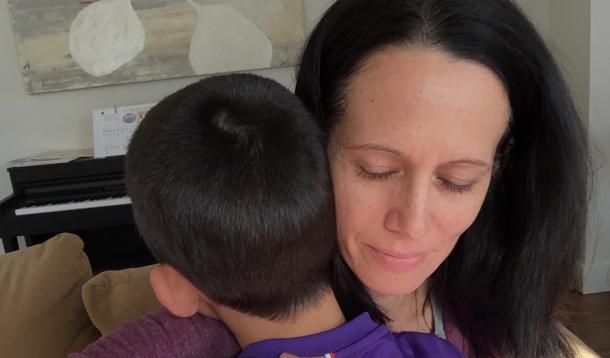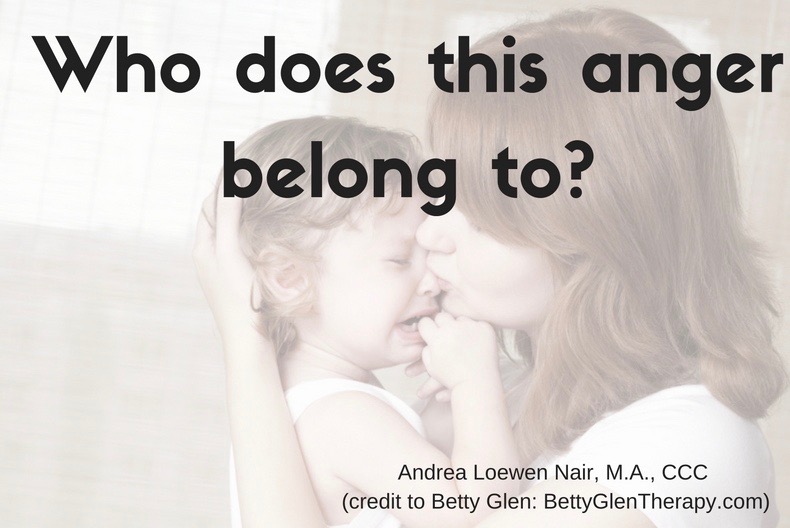
In all these years of studying and writing about tantrums, I admit I was still finding supporting my own children through their big emotions a challenge. I know the scripts, can do the calm-myself-down techniques, and even mostly exercise my own demons, but I was still sometimes flattened by other’s anger outbursts.
In conversations with my clients and the parents on my Facebook page, I know that I’m not alone in saying that a child-tantrum can be pretty defeating. Even when we feel confident in our approach to handling meltdowns, our self-talk can easily get the better of us and big emotions of our own get triggered.
In addition to those nasty messages like, “Are you kidding me – not again,” and “I’m so sick of this,” it just honestly takes a lot of energy to walk beside someone through their big feelings.
It’s only been since opening a school this September and being present for my students as they meltdown, too – every day – that I realized I needed to actually shift my mindset about another person’s upset. By the end of the day, I was limping home to spend the rest that day fighting to stay awake until bedtime.
Part of the way the flight-or-fight part of our brain works is that when someone around us gets activated, our first action is to also get activated. The switch that controls our instinctive reaction to defend or attack gets flipped on. It’s the second after that switch goes, which usually determines what behaviour we are going to do.
It takes energy to control our behavioural response and the physical ones, too: muscles get tensed, our heart rate increases, and breathing goes up. In a split second, we can go from calm to ready to pounce. It’s not surprising that it takes a great deal of control, skill, and practice to override that instinctual reaction.
Thankfully, it is possible to turn the emotional-activation switch off. I believe the first step to doing that is being aware of the anger and what it really represents.
I’ve learned to break down anger reactions – to distill them. I view the anger reaction as one burst with eight key parts:
1. The event that triggered the big emotions,
2. The messages our child is telling him or herself about the event/ his or her capabilities,
3. The instinctual, physical reaction our child experiences,
4. The release of that reaction (hitting/ shouting/ stomping away),
5. There’s also the bystander’s reaction, and
6. Any involvement in step 1 by another person
7. The calm down phase, and finally,
8. The solution-finding mode.
My response to anger now is to address each of these parts. For example, if a child gets very mad because another pushes him, I go through the steps like this:
1. Asking what happened the moment before the anger happened, and using validating language, a quiet voice, and head nods to show the child he is heard and trying to be understood. The words I often use are: “I wondered what happened here?”
2. Using positive core belief language to counter any negative ones that might have snuck in: “I see that you are mad because he pushed you. Maybe that happened by mistake? Or perhaps he was mad at you, too, and should have talked to you about that instead of pushing you? Let’s find out what’s really going on.”
3. Offering hugs or putting my arm around his shoulder to help sooth the physical response.
4. Reminding the child of boundaries for his behaviour: “It’s okay that you are mad, but it is not okay to hurt anyone with that anger. Let’s talk or walk that ‘mad’ out.”
5. Reeling myself in. This is a HUGE part of the steps for me. A friend of mine asked me this question, which is now one of the most critical reminders I need to be able to support someone else through upset without getting dragged into it.
Who does this anger belong to?

Most of the time the answer to that with my children, my students, and other important people around me is this: not me.
Pausing to remind myself that this anger does not belong to me allows me to do a kind of reset and stay focused on my child. I actually picture their angry words, facial expressions or aggression as images or words that fly around me without going into me. It’s amazing how helpful this imagery is!
Doing this helps me to allow another his or her process of having feelings without activating my own in the process.
6. Talking to the other person about the event and clarifying if there was a mistake, an apology that needs to be offered, or boundaries that need to be put in place.
7. Giving everyone time and space to process their big feelings. I usually go pretty quiet and stop talking to create that space.
8. Asking all those involved what can be done to address what has just happened and what can be done in the future to prevent the same thing from happening again (if that’s possible).
Your process of addressing and supporting anger doesn’t need to be exactly like mine, but it’s very helpful to identify and try a process that will suit you. As you use that process each day, evaluate if it’s helping you and if there might be changes to improve it. I’d love to hear about what you’ve learned about supporting your child’s anger. Feel free to comment here or over on my Facebook page.